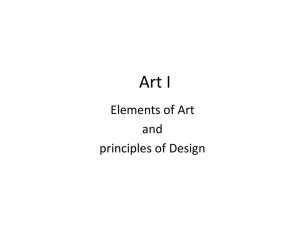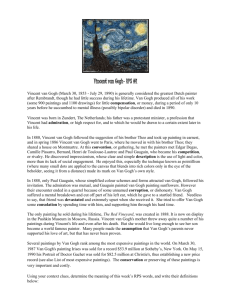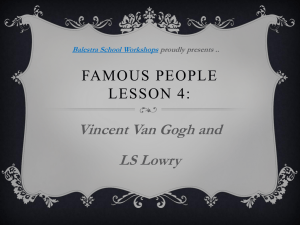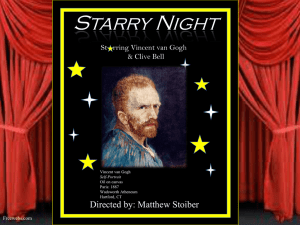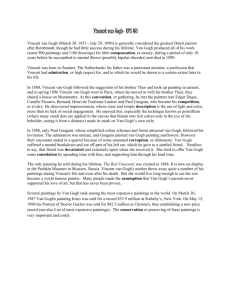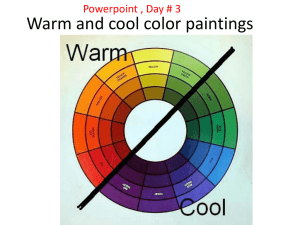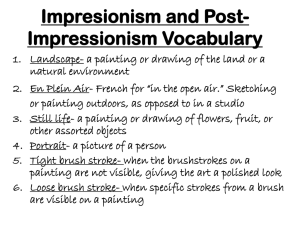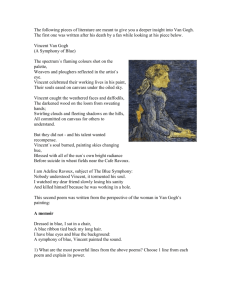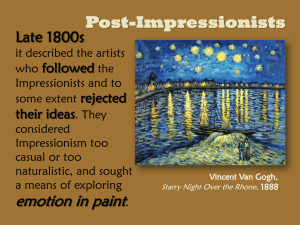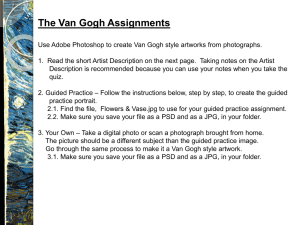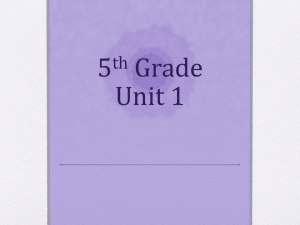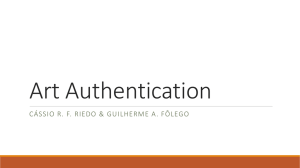van Gogh aesthetics and criticism PowerPoint
advertisement
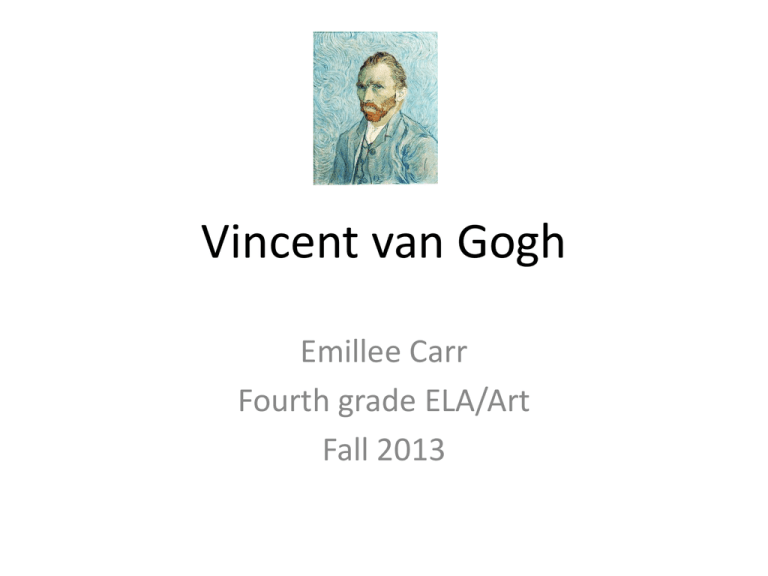
Vincent van Gogh Emillee Carr Fourth grade ELA/Art Fall 2013 What can we learn about how art can be used to express emotion through the works and life of Vincent van Gogh? Learning objectives: • Students will observe and describe selected artworks, using art vocabulary to express personal responses. • Students will listen to and analyze lyrics to Don McLean's song “Vincent” • Students will appropriately discuss artwork and song in small groups and as a class. • Students will write similes and metaphors describing the feelings of Vincent van Gogh’s paintings. • Students will create self-portraits in the style of Vincent van Gogh. Vincent Van Gogh • Born March 30, 1853 in the Netherlands • Began painting in his late twenties. • Self-taught painter. He practiced, explored, and experimented to develop his skills and style. • His work included self portraits, landscapes, still-life, portraits and paintings of cypresses, wheat fields and sunflowers. • His work is notable for its rough beauty, emotional honesty and bold color • Most of what we know about van Gogh is from letters that he wrote to his brother, Theo. • Van Gogh led a tumultuous personal life. – Prone to bouts of anger and depression, and many speculate he suffered from mental illness and seizures. • After an argument with a friend Van Gogh was so upset that he cut part of his ear off. • After this checked himself into a psychiatric hospital where he painted some of his most famous works: Stary Night and Irises. • Many of his self-portraits reflect his life-long struggle with these difficult emotions. • He died at age 37 Don McLean’s “Vincent” written about Vincent van Gogh • What to highlight on lyrics page: – – – – Meaning Things you want to know more about Things you think are interesting Connections in the song to what you know about his life (hint: “I noticed a painting where he had a bandage on his ear!” Take notes on the lyrics page provided. We will be discussing this in small groups and as a class! You will be turning this in www.youtube.com/watch?v=nkvLq0TYiwI Expressing Van Gogh's inspiration for the painting. One line says : "Look out on a summer's day." This is giving Van Gogh's vantage point looking out from the asylum at Saint-Remy. When he first entered the asylum, he painted mainly from his room or the courtyard garden, but later went further afield to paint. Starry, starry night. Paint your palette blue and grey, Look out on a summer's day, With eyes that know the darkness in my soul. Shadows on the hills, Sketch the trees and the daffodils, Catch the breeze and the winter chills, In colors on the snowy linen land. These are references to other Van Gogh paintings. Flaming Flowers: The Sunflower Series Swirling Clouds: Starry Night Field of Amber Grain: Wheat Field with Crows Weathered Faces: The Potato Eaters Starry, starry night. Flaming flowers that brightly blaze, Swirling clouds in violet haze, Reflect in Vincent's eyes of china blue. Colors changing hue, morning field of amber grain, Weathered faces lined in pain, Are soothed beneath the artist's loving hand. Metaphors and Similes Metaphor: a figure of speech in which a word or phrase is applied to an object or action to which it is not literally applicable. (her eyes are coal) Simile: a figure of speech involving the comparison of one thing with another thing of a different kind, used to make a description more emphatic or vivid (e.g., as brave as a lion, crazy like a fox ). Self portrait (1889) by Vincent van Gogh (one simile + one metaphor) Think: • The look on his face • How is he feeling? • What do his eyes say? • Simile= Like or as Irises by Vincent van Gogh (one simile + one metaphor) Hints: What do you feel when you look at these flowers? Simile= Like or as Color gives feeling! Van Gogh was always thinking about the effects of color in his work. • many gradations of a single color. • brought colors into dialogue to make his paintings more compelling and eloquent • Van Gogh became increasingly convinced that colors in themselves had expressive power. For him, color was the ideal means of conveying an atmosphere or an emotion. Impressionism: • a style or movement in painting originating in France in the 1860s, characterized by a concern with depicting the visual impression of the moment, esp. in terms of the shifting effect of light and color. • a literary or artistic style that seeks to capture a feeling or experience rather than to achieve accurate depiction. Lets make art! Use oil pastels on 8 ½ x 11 paper Must convey emotion through color Must use Impressionist style (short lines) of Vincent van Gogh Can be portrait, scene, or abstract Reflection: • Describe one painting or aspect of Vincent van Gogh’s life that you used as inspiration. • What mood does your artwork depict? How did you express your mood in your artwork?

